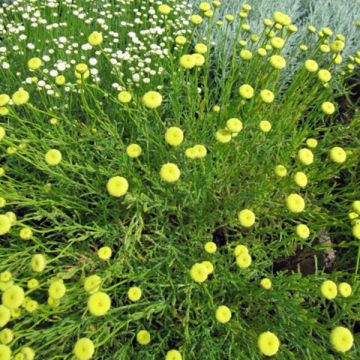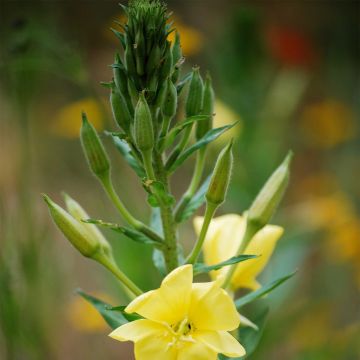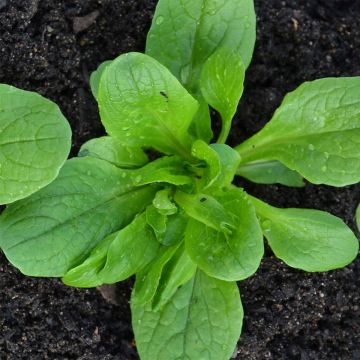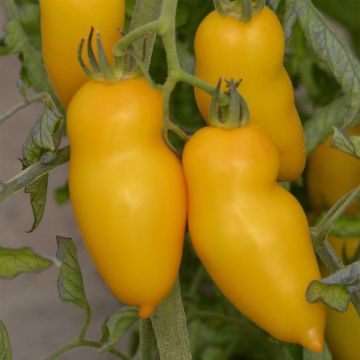

Thymus citriodorus -Lemon thyme in seedlings
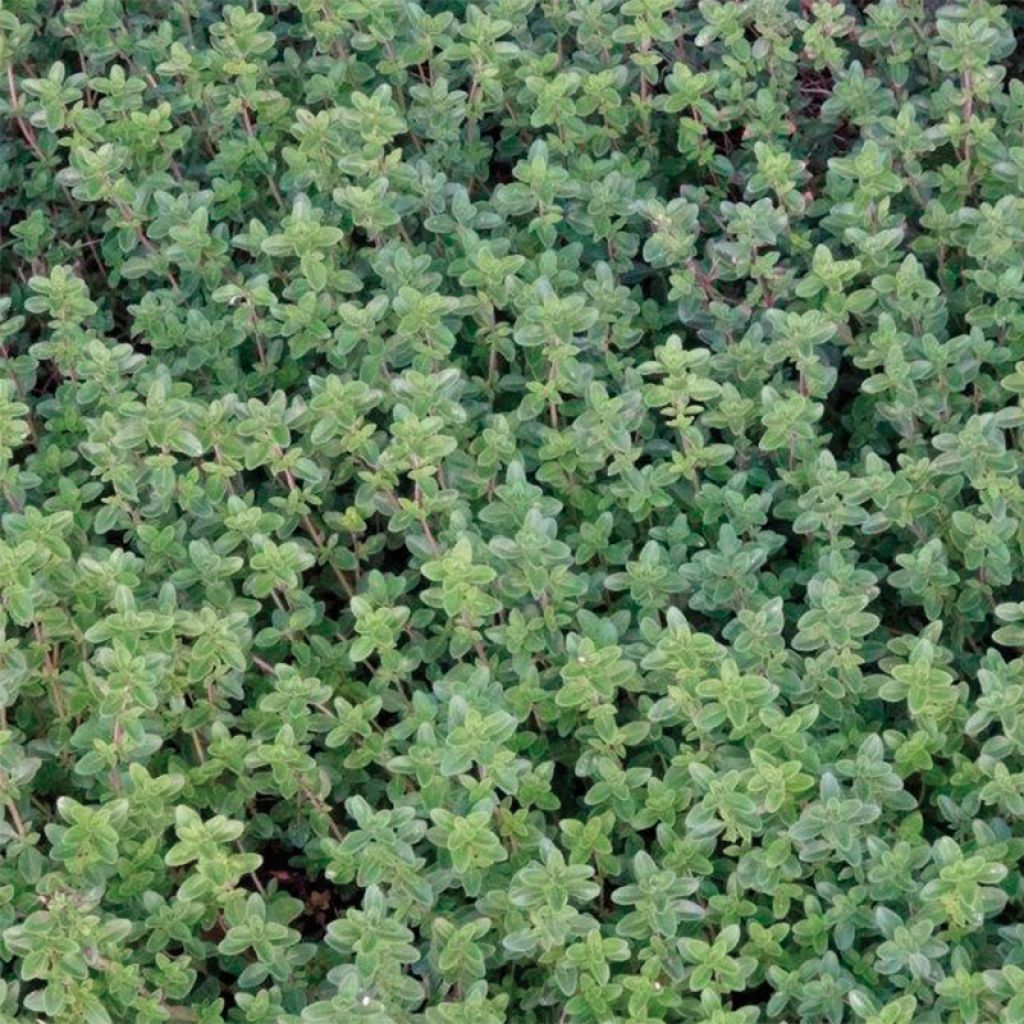

Thym citron BIO en plants - Thymus citriodorus
Thymus citriodorus -Lemon thyme in seedlings
Thymus x citriodorus
Lemon thyme, Citrus thyme
This item cannot be shipped to the selected country
Delivery charge from €6.90
Delivery charge from €6.90
More information
Delivery charge from €6.90
Delivery charge from €6.90
More information
Schedule delivery date,
and select date in basket
This plant carries a 6 months recovery warranty
More information
We guarantee the quality of our plants for a full growing cycle, and will replace at our expense any plant that fails to recover under normal climatic and planting conditions.
From €7.90 for pickup delivery and €6.90 for home delivery
Express home delivery from €8.90.
From €7.90 for pickup delivery and €6.90 for home delivery
Express home delivery from €8.90.

Description
The Lemon Thyme (Thymus citriodorus) is a variety with leaves that release a pleasant lemon scent. Its leaves add flavor to many dishes and its lemony note is particularly suitable for fish, vegetables, or infusions. Thyme thrives in most types of soil, including rocky soil, but is sensitive to excess moisture. The plug plants are produced using organic methods and can be planted in spring or autumn for year-round harvesting.
Native to western and southern Europe, where it is sometimes found in the wild, Thyme is a perennial undershrub belonging to the Lamiaceae family. Hardy, it forms small, fragrant clumps with evergreen gray-green foliage. This bee-friendly plant produces pretty little flowers in summer, ranging in color from white to pink-purple depending on the varieties.
Its leaves with a scent of the garrigue are highly appreciated in cooking. Used alone or in a bouquet garni, combined with Bay Leaf, Parsley, and Rosemary, Thyme leaves flavor stews, sauces, marinades, and court-bouillons. They can also be used in infusions, known for their ability to relieve digestive problems.
Thyme is a hardy and easy-to-grow herb that thrives in poor, light, and even rocky, well-drained soils. If your soil is rather moist and clayey, we recommend growing it in a pot where it will thrive very well.
Harvesting: Thyme can be harvested throughout the year as its leaves are evergreen. It is best to pick it in the morning. Thyme is most fragrant during its flowering period in summer. Since it is advisable to prune it to maintain a compact shape, take advantage of this to stock up for the winter months!
Preservation: Thyme is traditionally preserved by drying. After washing and drying the stems, hang the bouquets upside down in a dry and airy place. This is a simple and quick process that you can replace with freezing if it seems more convenient to you.
The gardener's tip: In the garden, don't hesitate to mix genres by placing some herbs like Thyme in the middle of your perennial borders or in rockeries. They will integrate perfectly and the sometimes strong scents of aromatic plants often have the ability to repel insects that may attack slightly sensitive plants like some roses.
Thymus citriodorus -Lemon thyme in seedlings in pictures


Harvest
Plant habit
Foliage
Other Vegetable plants A to Z
Planting and care
Thyme is a hardy and easy-to-grow aromatic herb that thrives in poor, light, and even rocky, well-drained soils. If your soil is rather moist and clayey, we recommend growing it in a pot where it will thrive. Planting plug plants should be done in spring (March-April) or at the end of summer (August-September).
In the ground: First, let the plug plants grow by transplanting them into trays or buckets measuring 8 to 13 cm (3 to 5in) in diameter, filled with compost. Place them in a warm and bright location. Water regularly. For planting in the ground, choose a very sunny location. Space the plants 30 cm (12in) apart in all directions. Dig a hole, add well-rotted compost, place the plug plant and cover with soil. Firmly press down and water lightly.
In a pot: Place a layer of gravel or clay pellets at the bottom of the pot to facilitate drainage. Fill the pot with a mixture of compost and garden soil. Very delicately place the plug plant, cover with soil and firm down well. Water lightly. Place your pot in the sun.
As for maintenance, water very sparingly, mainly in summer, as Thyme does not tolerate excessive humidity. For pot cultivation, do not let water accumulate in the saucer.
Annual pruning (on the wood of the year) will keep it in a nice rounded and stocky habit.
Thyme can be propagated by dividing clumps or by propagation by cuttings in summer. This operation is recommended after a few years, especially in cold and humid climates.
Cultivation
Care
Intended location
-
, onOrder confirmed
Reply from on Promesse de fleurs
Organic vegetable gardens
Haven't found what you were looking for?
Hardiness is the lowest winter temperature a plant can endure without suffering serious damage or even dying. However, hardiness is affected by location (a sheltered area, such as a patio), protection (winter cover) and soil type (hardiness is improved by well-drained soil).

Photo Sharing Terms & Conditions
In order to encourage gardeners to interact and share their experiences, Promesse de fleurs offers various media enabling content to be uploaded onto its Site - in particular via the ‘Photo sharing’ module.
The User agrees to refrain from:
- Posting any content that is illegal, prejudicial, insulting, racist, inciteful to hatred, revisionist, contrary to public decency, that infringes on privacy or on the privacy rights of third parties, in particular the publicity rights of persons and goods, intellectual property rights, or the right to privacy.
- Submitting content on behalf of a third party;
- Impersonate the identity of a third party and/or publish any personal information about a third party;
In general, the User undertakes to refrain from any unethical behaviour.
All Content (in particular text, comments, files, images, photos, videos, creative works, etc.), which may be subject to property or intellectual property rights, image or other private rights, shall remain the property of the User, subject to the limited rights granted by the terms of the licence granted by Promesse de fleurs as stated below. Users are at liberty to publish or not to publish such Content on the Site, notably via the ‘Photo Sharing’ facility, and accept that this Content shall be made public and freely accessible, notably on the Internet.
Users further acknowledge, undertake to have ,and guarantee that they hold all necessary rights and permissions to publish such material on the Site, in particular with regard to the legislation in force pertaining to any privacy, property, intellectual property, image, or contractual rights, or rights of any other nature. By publishing such Content on the Site, Users acknowledge accepting full liability as publishers of the Content within the meaning of the law, and grant Promesse de fleurs, free of charge, an inclusive, worldwide licence for the said Content for the entire duration of its publication, including all reproduction, representation, up/downloading, displaying, performing, transmission, and storage rights.
Users also grant permission for their name to be linked to the Content and accept that this link may not always be made available.
By engaging in posting material, Users consent to their Content becoming automatically accessible on the Internet, in particular on other sites and/or blogs and/or web pages of the Promesse de fleurs site, including in particular social pages and the Promesse de fleurs catalogue.
Users may secure the removal of entrusted content free of charge by issuing a simple request via our contact form.


































